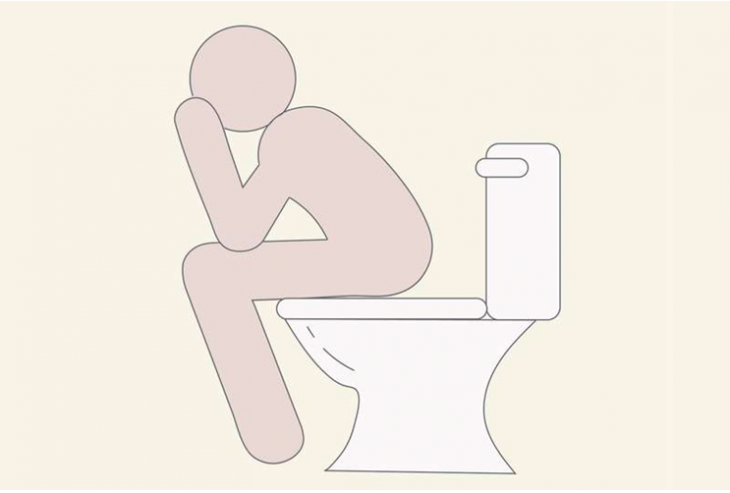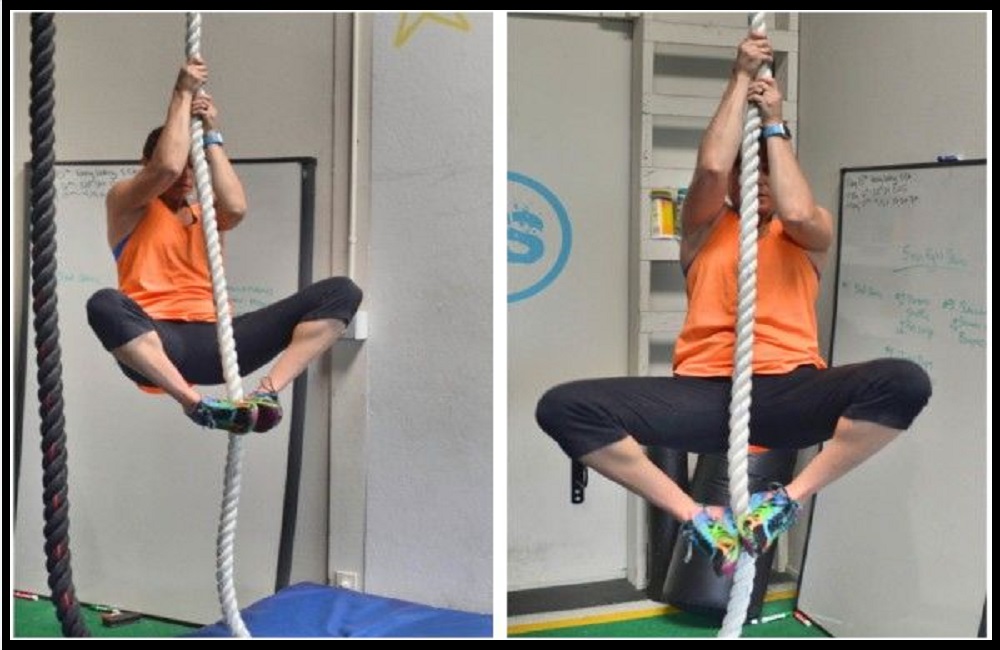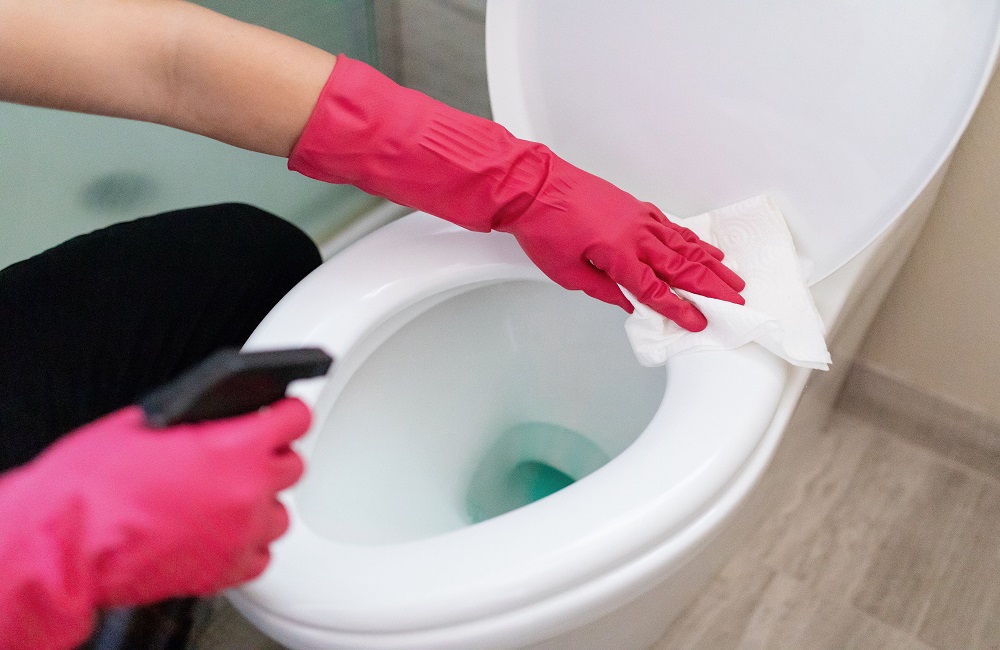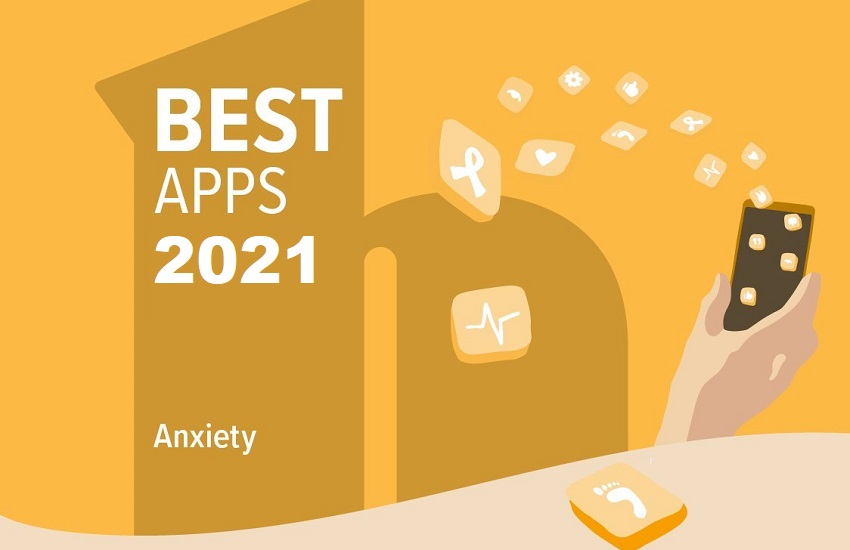
What Does Constipation Feel Like?
Constipation happens when you have trouble passing stools, don’t feel like you pass them altogether, or go four or more days without having a bowel movement.
You might always feel bloated or unhappy if you have constipation. You can get unfavourable side effects from chronic constipation, such as intestinal obstructions.
According to statistics, 15% of Americans experience constipation.
This post will go over constipation symptoms and treatments you can attempt, regardless of whether you’re expecting or have haemorrhoids.
Start by looking at the path your food takes throughout digestion; this may be useful.
Gastrointestinal system
Your digestive system’s borders are from your mouth to your rectum. A few of the primary digestive organs are listed below:
- Small Intestines
- Stomach
- The rectum serves as the final exit point for faeces from the large intestine.
Along each segment of the digestive tract, nutrients are absorbed, and eventually, waste products from food breakdown are removed from the body.
With the help of certain movements, such as churning in the stomach and peristalsis (a rhythmic movement) in the intestines, food material is pushed along the digestive tract.
The stool’s softness and mass improve the likelihood that it will initiate the intestines’ normal motions and advance. When it’s time to go to the bathroom, your pelvic floor muscles work together to push stool out of the rectum.

What does it feel like to be constipated?
Constipation may result from one or more failures of the planned pathway for stool elimination.
For instance, having a problem with the nerves and muscles needed to pass a bowel movement, having firm or slow-moving faeces, etc.
Thus, a number of symptoms may “feel” like constipation. Examples include:
Intestinal cramps, the sensation that excrement is trapped in the rectum and cannot be removed, fullness in the abdomen or pelvic
Experiencing heaviness or discomfort in the lower back and abdomen
Experiencing back pain
It can occasionally be difficult to tell the difference between stomach and intestine discomfort. Your intestines may press up on your stomach and feel swollen or crampy.
As a result, you could have stomach discomfort even though your intestines are the real cause of your constipation.
When is constipation a serious medical issue?
Sometimes, constipation might result in a medical emergency.
Get prompt medical guidance and care if you experience any of the following:
Even after employing at-home self-care techniques like laxatives, symptoms remain the same or worsen.
Constipation and diarrhoea that come and go, as well as persistent discomfort following a bowel movement
These warning signs and symptoms may point to intestinal blockage or gastrointestinal haemorrhage. These circumstances might endanger life.

What are the constipation remedies?
Constipation can be treated with anything from dietary changes to prescription medications. If a scar or other obstruction is keeping you from passing someone, surgery may be required.
To reduce the likelihood of constipation, you can use a range of at-home self-care methods, such as: Drink enough water so that your urine has a light yellow tint.
Consuming at least 25 grammes of fiber-containing fruits, whole grains, and veggies per day
Engaging in regular exercise, such as walking, biking, or dancing. By mimicking the motion of the stool, these elements of physical activity can speed up stool movement.
If you think you might be taking any medications that affect constipation, talk to your doctor. However, you shouldn’t stop taking your drugs without first talking to your doctor.
In addition, over-the-counter (OTC) medications like fibre supplements can aid in reducing constipation.
How does being constipated feel during pregnancy?
Pregnant women are more likely than the general population to experience constipation. According to studies, between 11 and 38% of pregnant mothers experience symptoms of congestion.
Pregnancy-related constipation is more likely to occur for a variety of reasons, including:
Multiline hormone levels that are lower and progesterone levels that are higher, which slow intestinal motility.
- Due to increased water absorption in the intestines, stool dries out.
- More calcium and iron-rich supplements may increase your risk of constipation.
- A bloated uterus that causes the intestines to work harder and move more slowly
- Lower intensity of activity.
Constipation during pregnancy may initially be challenging to diagnose since you may be unaware of how your symptoms connect to being pregnant. Two examples are bloating and symptoms that resemble abdominal pressure.

You are not allowed to take the same prescriptions you did prior to getting pregnant due to concerns that they may affect the unborn child.
Furthermore, there is little research on the subject of using laxatives to promote bowel motions while pregnant that is safe.
Unfavorable side effects do not appear to be associated with various treatments, such as:
- Chemicals that form masses (although these can cause gas, cramping, and bloating in some pregnant women)
- Lubricating laxatives, such as mineral oil
- Sodium docusate and other stools softeners (Colace)
Laxative-induced electrolyte imbalances can occasionally make you feel unwell and could even be harmful to your unborn child.
This is why it’s imperative that pregnant women adopt lifestyle adjustments including increasing their intake of fibre, water consumption, and exercise while taking these medications for a brief period of time (if tolerated).
When you have hemorrhoids and are constipated
Hemorrhoids, or swollen blood vessels, can form inside or outside the rectum. When having bowel movements, they could bleed and hurt to pass.
This may be particularly tough for you because your haemorrhoids may already make it difficult for you to pass your bowel movements or cause them to pass more slowly than usual. Combining the two circumstances could result in an extremely unpleasant bathroom experience.
However, if you have haemorrhoids and are constipated, you shouldn’t try to put off going to the bathroom when the urge arises. When the stool finally comes out, it can worsen haemorrhoids and put further strain on the bowels.
Hifting your body position when using the restroom will help reduce pressure on the rectum if you have haemorrhoids. As an example, visualise putting your feet up on a small step stool while using the restroom. This may make it easier for stools to pass.
Treating constipation with hemorrhoids
The probability of getting haemorrhoids and constipation may be reduced with treatment. Examples include cleaning the anal region thoroughly and carefully after using the restroom. Some people could find relief from cleaning the area or using baby wipes.
Drinking lots of water to make stools softer.
To decrease itching and skin irritation, apply steroid lotions like OTC Preparation H or other anti-inflammatory creams to the area.

Consuming high-fiber foods, like as grains, fruits, and vegetables, to naturally increase stool size and facilitate passage.
If you continue to encounter haemorrhoids symptoms, such as blood in your stool, talk to your doctor.
What causes constipation?
Constipation has a variety of underlying reasons. These could include:
- Aging
- Diabetes
- Dietary modifications, such as consuming less fibre or not getting enough liquids
- Experience with colon surgery
- Past digestive system conditions like irritable bowel syndrome
- Previous pelvic floor conditions
- Intestinal obstructions
- Pregnancy
Moreover, with particular medications, such as:
• Calcium and aluminum-containing antacids
• Anticonvulsants
• Calcium channel blockers
• Diuretics
• Additional iron
• Opiate analgesics
• Medicines used to treat Parkinson’s disease.
When the colon’s motility slows down mysteriously, constipation may result.
How to Make Yourself Poop for Relief from Constipation
Solutions for constipation like taking a fibre supplement, eating fiber-rich foods, and giving yourself a colonic massage might make things easier. Utilizing a laxative, suppository, or enema are examples of further therapies.

Constipation: What is it?
Constipation is indicated by fewer than three bowel movements each week or by difficult-to-pass faeces. This may lead to protracted bending over and straining.
There are many underlying causes of constipation, and it’s typically considered a symptom rather than an actual ailment. Dehydration or eating insufficient amounts of meals high in fibre can both cause constipation. Stress, hormonal changes, spinal injuries, muscular problems, malignancies, structural problems with the digestive system, and other, more severe disorders can all cause constipation.
According to a 2014 study, the complete gastrointestinal transit typically lasts between 10 and 73 hours. However, how many bowel movements you have each day depends on a variety of factors, including your exercise and eating habits, age, sex, and general health. Although three or fewer times per week may be detrimental, there is no recommended minimum number of bowel movements.
Learn more about treating both short-term and long-term constipation in the paragraphs that follow, as well as when you should consult a doctor.
Advice for overcoming constipation quickly
You can experience a bowel movement in as little as a few hours with the help of the following effective quick fixes for constipation.
1. Take a fiber supplement, first.
If a lack of fibre in your diet is the cause of your constipation, fibre tablets are readily available and helpful at promoting bowel movements. They work by adding bulk or volume to your faces. This makes it easier for waste to pass through the intestines and leave the body.
Both local and internet retailers provide fibre supplements. Here are a few common instances:
- A calcium polycarbophil (FiberCon)
- Phylum of methylcellulose (Consul, Metamucil) (Citrucel)
2. Consume meals to relieve constipation
Eating meals high in fibre can relieve constipation, according to the National Institute of Diabetes and Digestive and Kidney Diseases (NIDDK).

Foods high in fibre include:
- Oats
- Whole grain bread or cereal
- Fatty spaghetti
- High-fiber fruits, such apples and bananas
- Broccoli and other fibrous vegetables, as well as leafy greens
- Bristle risotto
- Beans with lentils
- Broken up peas
- Nuts such as pecans, walnuts, and almonds
Make sure to drink enough water while consuming these things because doing so will help your stool pass through your system.
Avoiding meals that could aggravate constipation is a recommended strategy, such as:
Other foods lacking in fibre, including chips
Examples of prepared foods include frozen meals and meat boxes.
Fast food items
Processed foods include frozen dinners, hot dogs, and deli meats.
3. Sip on some water.
Adequate hydration intake is necessary for regular bowel motions. Researchers recommend drinking 1.8 litres, or seven to eight 8-ounce glasses, of clear water daily. The amount your body truly requires can vary depending on your size, sex, and whether you are pregnant or nursing. If you are constipated and haven’t been drinking enough water, a large glass of water or another clear beverage could help you pass gas.
4. Utilize a stimulant laxative.
It could take up to 6 to 12 hours for laxative stimulants to begin acting. They function by tightening the intestines in order to induce a bowel movement. You may get stimulants over-the-counter (OTC) at your local drugstore. Among the options are: bisacodyl (Dulcolax, Ducodyl, Correctol)
Senna’s sennosides (Senokot)
According to the NIDDK, laxative stimulants should be used to treat severe constipation that is refractory to other therapies. You should also refrain from using laxatives until all other potential secondary causes of constipation have been ruled out.
5. Take an osmotic laxative
In certain ways, osmotic laxatives work differently from stimulant laxatives. They are designed to make it easier for liquids to move through the colon. Several examples are as follows:
PEG, or polyethylene glycol, magnesium hydroxylacetate (Phillips Milk of Magnesia) (MiraLAX)
- Magnesium citrate
- Lactulose (Kristalose)
Keep in mind that osmotic laxatives frequently work a little slower than stimulant laxatives. Within two to three days, they ought to begin working.

With a doctor’s prescription, you can obtain stronger PEG (GoLYTELY, NuLYTELY).
6. Make use of a lubricant laxative
Mineral oil and other lubricant laxatives act by smoothing the surface of your intestines and stool bulk. Faces can exit your body more easily thanks to this smoother passage through your intestines.
7. Use a softener for your stools.
Constipation can have many causes, one of which is dehydration, which can lead to firm stools. A stool softener, such as docusate sodium (Colace) or docusate calcium (Surfak), might moisten the stool by eliminating water from your intestines. This makes it simpler for the faeces to leave your body.
8. Perform an enema
You can experiment with different types of enemas. Enemas work by causing the faces to become sufficiently pliable to trigger a bowel movement. Enemas are used to force stools out of the rectum. They can be purchased in pharmacies or online.
There are numerous typical varieties of epistaxis.
Sodium phosphate (Fleet)
Soapsuds
Enemas based on water
9. Consider a suppository.
One method of treatment for constipation is rectal suppositories. These suppositories are inserted into the rectum to help promote bowel movements by softening the faces.
You may typically find glycerin or bisacodyl suppositories at your neighbourhood pharmacy.

10. Squat to go to the bathroom.
Bring a little footstool into the bathroom the next time you need to use the restroom. If you place your feet up on a stool in front of the toilet while you poop, putting your body more or less in a squatting position as opposed to a seated position, it may be easier to pass faeces without straining.
11. Take a workout.
By increasing the blood flow to your abdomen, exercises like walking, yoga, or mild running can help you have more bowel movements.
12. Try getting a colon massage
Manually massaging the colon may aid those whose constipation is caused by the sluggish transit of faeces through the colon by causing the intestines to become more active.
An automatic belly massager may help persons with persistent constipation hasten the transit of their faeces, according to a 2021 study.
13. Use natural cures
Constipation may be treated and prevented with the aid of some natural treatments, such as taking probiotics. The frequency of faeces is actually increased by using these supplements, according to some studies. Although probiotics are generally believed to be safe, there are rare situations when they may not be. For instance, those with immunodeficiencies shouldn’t often utilise them.
Additionally, you should speak with a doctor before consuming any herbs or beverages to treat constipation. According to 2019 study, clover, fennel, and senna may help with constipation; however, herbal supplements may interact negatively with other over-the-counter (OTC) and prescription medications you may be using.

Advice for kids
A youngster is termed to be constipated if they have less than two bowel movements each week. Like it can in adults, constipation in children can cause hard, firm stools that are difficult to pass.
According to estimates, 3% of kid’s worldwide struggle with “functional constipation,” or constipation without a known underlying reason. Encourage your youngster to move frequently and increase their water and fluid intake to help them overcome constipation.
Small children who have finished toilet training might also benefit from regular, daily trips to the bathroom for five to ten minutes, ideally directly after meals.

If your child’s condition has not improved after a week, you should take them to the doctor. The following additional symptoms in kids with constipation call for immediate medical attention:
- Diarrhea
- Abdominal compression
- Fever
- Having no appetite
- Lose weight
- Constipation before the month mark in your child’s life
Advice about pregnancy
Constipation is another common pregnancy symptom, especially in the third trimester. Additionally, it might occur soon after delivering birth.
In these situations, boosting your fibre intake through meals is advised by the American College of Obstetricians and Gynecologists so that you attain a daily minimum of 25 grimes. It’s critical to increase both your water and fibre intake.
Stool softeners may be safe to use when pregnant if only briefly utilised. If you still experience symptoms after making dietary changes, speak with a doctor to establish the best course of action.
Treatment for sporadic v/s persistent constipation
First-line medications, such over-the-counter laxatives or stool softeners, can assist with sporadic constipation. However, chronic or persistent constipation may require a prescription.
Constipation could be brought on by another condition, such as irritable bowel syndrome (IBS). If so, solving the root problem might alleviate your symptoms. Another possible type of constipation is idiopathic constipation, which may occur unexpectedly or have an unknown cause.
Therapeutic alternatives include:
Patients with idiopathic constipation or IBS may benefit from utilising the bowel regularity-promoting medications linaclotide (Linzess) or plecanatide (Trulance).
Lubiprostone (Amitiza), which helps to soften stools and increase bowel frequency by increasing fluid in the digestive tract.
Prucalopride (Resolor), which promotes bowel regularity in people with persistent idiopathic constipation.
It’s vital to discuss alternative treatments for chronic constipation with a doctor before taking prescription drugs for constipation because their long-term safety is up for debate.
Severe constipation therapy
Those who suffer from severe constipation that doesn’t improve with dietary changes or traditional laxatives may benefit from using a laxative stimulant. If you find that you need to take laxatives in order to pass a bowel movement, speak with a doctor.
In addition, biofeedback therapy might be used. This therapy can help you retrain the muscles in your colon to produce regular bowel movements.
Although it is frequently thought of as a last resort, chronic constipation can occasionally be linked to an underlying medical condition that calls for surgery… Examples include operations to remove the colon or treat a rectal prolapse or obstruction.
Lifestyle adjustments that can facilitate pooping
The aforementioned advice can help to promote a quick bowel movement to relieve short-term discomfort. However, some of the dietary and lifestyle changes that are outlined below can also aid in your long-term avoidance of constipation. To maintain consistency, try to incorporate the following tips into your daily routine:
If at all feasible, up your fibre intake. To improve your intake of fibre, consume fresh produce, whole grains, lentils, and beans. You should take in between 22 and 34 grammes of fibre every day, depending on your age. If you need to use a fibre supplement to treat persistent constipation, start with a low dose and gradually increase it. A high fibre diet may cause some people to feel bloated.
Try to exercise on most days of the week, if you can. This can involve engaging in regular physical activity, such as walking, jogging, biking, swimming, or other sports. The right circulation and healthy bowels can both be maintained by light exercise.
Every day, consume a lot of liquids, particularly water and other transparent liquids. Every day, one should drink eight 8-ounce glasses of clear liquids.
Keep your tension under control.
Avoid “holding in” your stool. Try to get your period at around the same time every day as well.
Whenever to visit a doctor
Constipation that is chronic can make it challenging for a person to focus on daily tasks and responsibilities. In the event that your constipation lasts more than a week and doesn’t get better with medicine, see a doctor to rule out any significant problems. Consult a doctor right away if your constipation is accompanied by dizziness, fatigue, cramps, or spasms.
Takeaway
Long-term or short-term constipation can be unpleasant, and its symptoms don’t always show up where and when you expect them to.
Thankfully, most bouts of constipation may be handled at home with self-care methods. If you experience pain or bleeding, or if your symptoms don’t go away, call a doctor.
Constipation is defined as having less than three bowel movements per week and having bowel movements that are tough or hard to pass without straining.
Home cures for constipation include eating more fibre, taking laxatives, utilising suppositories, and using stool softeners. It may also be helpful to try the squat position, get a colonic massage, or do some light exercise.
If you frequently experience constipation or if it lasts more than a week, talk to your doctor about your symptoms. They can run tests to rule out other conditions that might be causing your constipation and can also prescribe medication to treat it.
If you have less than three bowel movements per week, bowel movement issues, or other pain, it may be prudent to see a doctor.
If you experience other symptoms such as fatigue, cramps, spasms, or dizziness, see a doctor as soon as possible.


